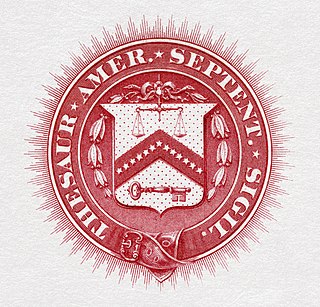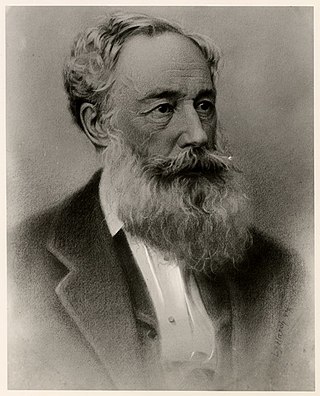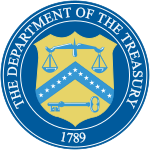| No. | Name | Term of office | President(s) served under |
|---|
| 1 | 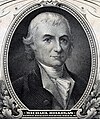

Michael Hillegas | July 29, 1775 –
September 11, 1789 (14 years, 44 days) | George Washington
(also served under Confederation Congress) |
|---|
Hillegas served jointly with George Clymer until August 6, 1776.
The title of the office was "Treasurer of the United Colonies" until May 14, 1777. [6] |
| 2 | Samuel Meredith | September 11, 1789 –
December 1, 1801 (12 years, 81 days) | George Washington
John Adams
Thomas Jefferson |
|---|
| 3 | 
Thomas T. Tucker | December 1, 1801 –
May 2, 1828 (26 years, 153 days)
(served the longest term) | Thomas Jefferson
James Madison
James Monroe
John Quincy Adams |
|---|
| 33 days vacant |
| 4 | 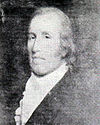
William Clark | June 4, 1828 –
May 26, 1829 (356 days) | John Quincy Adams
Andrew Jackson |
|---|
| 5 | John Campbell | May 26, 1829 –
July 20, 1839 (10 years, 55 days) | Andrew Jackson
Martin Van Buren |
|---|
| 2 days vacant |
| 6 | William Selden | July 22, 1839 –
November 23, 1850 (11 years, 124 days)
(served under the most presidents) | Martin Van Buren
William Henry Harrison
John Tyler
James K. Polk
Zachary Taylor
Millard Fillmore |
|---|
| 4 days vacant |
| 7 | 
John Sloane | November 27, 1850 –
April 1, 1853
(2 years, 125 days) | Millard Fillmore
Franklin Pierce |
|---|
| 3 days vacant |
| 8 | Samuel L. Casey | April 4, 1853 –
December 22, 1859 (6 years, 262 days) | Franklin Pierce
James Buchanan |
|---|
| 68 days vacant |
| 9 | 
William C. Price | February 28, 1860 –
March 21, 1861 (1 year, 21 days) | James Buchanan
Abraham Lincoln |
|---|
| 10 | 

Francis E. Spinner | March 16, 1861 –
July 30, 1875 (14 years, 136 days) | Abraham Lincoln
Andrew Johnson
Ulysses S. Grant |
|---|
| 11 | 

John C. New | June 30, 1875 –
July 1, 1876
(1 year, 1 day) | Ulysses S. Grant |
|---|
| 12 | 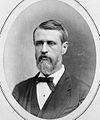

A. U. Wyman | July 1, 1876 –
June 30, 1877 (364 days) | Ulysses S. Grant
Rutherford B. Hayes |
|---|
| 13 | 

James Gilfillan | July 1, 1877 –
March 31, 1883 (5 years, 273 days) | Rutherford B. Hayes
James A. Garfield
Chester A. Arthur |
|---|
| 14 | 

A. U. Wyman | April 1, 1883 –
April 30, 1885 (2 years, 29 days) | Chester A. Arthur
Grover Cleveland |
|---|
| 15 | 
Conrad N. Jordan | May 1, 1885 –
March 23, 1887 (1 year, 326 days) | Grover Cleveland |
|---|
| 62 days vacant |
| 16 | 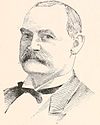

James W. Hyatt | May 24, 1887 –
May 10, 1889 (1 year, 351 days) | Grover Cleveland
Benjamin Harrison |
|---|
| 17 | 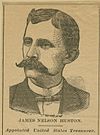

James N. Huston | May 11, 1889 –
April 24, 1891 (1 year, 348 days) | Benjamin Harrison |
|---|
| 18 | 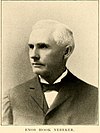

Enos H. Nebeker | April 25, 1891 –
May 31, 1893 (2 years, 36 days) | Benjamin Harrison
Grover Cleveland |
|---|
| 19 | 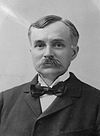

Daniel N. Morgan | June 1, 1893 –
June 30, 1897 (4 years, 29 days) | Grover Cleveland
William McKinley |
|---|
| 20 | 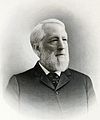

Ellis H. Roberts | July 1, 1897 –
June 30, 1905 (7 years, 364 days) | William McKinley
Theodore Roosevelt |
|---|
| 21 | 
Charles H. Treat | July 1, 1905 –
October 30, 1909 (4 years, 121 days) | Theodore Roosevelt
William Howard Taft |
|---|
| 22 | 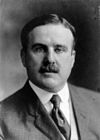

Lee McClung | November 1, 1909 –
November 21, 1912 (3 years, 20 days) | William Howard Taft |
|---|
| 23 | 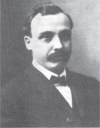

Carmi A. Thompson | November 22, 1912 –
March 31, 1913 (129 days)
(served the shortest term) | William Howard Taft
Woodrow Wilson |
|---|
| 24 | 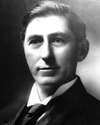

John Burke | April 1, 1913 –
January 5, 1921 (7 years, 279 days) | Woodrow Wilson |
|---|
| 117 days vacant |
| 25 | 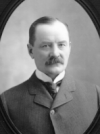

Frank White | May 2, 1921 –
May 1, 1928
(6 years, 365 days) | Warren G. Harding
Calvin Coolidge |
|---|
| 30 days vacant |
| 26 | 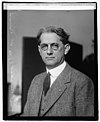
Harold Theodore Tate | May 31, 1928 –
January 17, 1929 (231 days) | Calvin Coolidge |
|---|
| 27 | 
W. O. Woods | January 18, 1929 –
May 31, 1933 (4 years, 133 days) | Calvin Coolidge
Herbert Hoover
Franklin Delano Roosevelt |
|---|
| 28 | 

William Alexander Julian | June 1, 1933 –
May 29, 1949 (15 years, 362 days) | Franklin D. Roosevelt
Harry S. Truman |
|---|
| 23 days vacant |
| 29 | 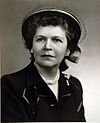

Georgia Neese Clark | June 21, 1949 –
January 27, 1953 (3 years, 220 days) | Harry S. Truman
Dwight D. Eisenhower |
|---|
| 30 | 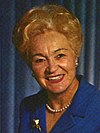

Ivy Baker Priest | January 28, 1953 –
January 29, 1961 (8 years, 1 day) | Dwight D. Eisenhower
John F. Kennedy |
|---|
| 31 | 
Elizabeth Rudel Smith | January 30, 1961 –
April 13, 1962 (1 year, 73 days) | John F. Kennedy |
|---|
| 265 days vacant |
| 32 | 

Kathryn O'Hay Granahan | January 3, 1963 –
November 22, 1966 (3 years, 323 days) | John F. Kennedy
Lyndon B. Johnson |
|---|
| 898 days vacant |
| 33 | Dorothy Andrews Elston [13] | May 8, 1969 –
July 3, 1971
(2 years, 56 days) | Richard Nixon |
|---|
| 167 days vacant |
| 34 | 

Romana Acosta Bañuelos | December 17, 1971 –
February 14, 1974 (2 years, 59 days) | Richard Nixon |
|---|
| 127 days vacant |
| 35 |

Francine Irving Neff | June 21, 1974 –
January 19, 1977 (2 years, 212 days) | Richard Nixon
Gerald Ford |
|---|
| 236 days vacant |
| 36 | 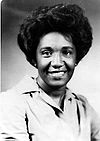

Azie Taylor Morton | September 12, 1977 –
January 20, 1981 (3 years, 130 days) | Jimmy Carter |
|---|
| 56 days vacant |
| 37 | 
Angela Marie Buchanan | March 17, 1981 –
July 5, 1983
(2 years, 110 days) | Ronald Reagan |
|---|
| 79 days vacant |
| 38 | 

Katherine D. Ortega | September 22, 1983 –
July 1, 1989
(5 years, 282 days) | Ronald Reagan
George H. W. Bush |
|---|
| 163 days vacant |
| 39 |

Catalina Vasquez Villalpando | December 11, 1989 –
January 20, 1993 (3 years, 40 days) | George H. W. Bush |
|---|
| 405 days vacant |
| 40 | 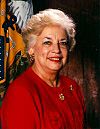

Mary Ellen Withrow | March 1, 1994 –
January 20, 2001 (6 years, 325 days) | Bill Clinton |
|---|
| 208 days vacant |
| 41 | 

Rosario Marin | August 16, 2001 –
June 30, 2003 (1 year, 318 days) | George W. Bush |
|---|
| 569 days vacant |
| 42 | 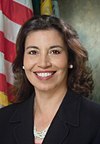

Anna Escobedo Cabral | January 19, 2005 –
January 20, 2009 (4 years, 1 day) | George W. Bush |
|---|
| 198 days vacant |
| 43 | 

Rosa Gumataotao Rios | August 6, 2009 –
July 11, 2016
(6 years, 340 days) | Barack Obama |
|---|
| 343 days vacant |
| 44 | 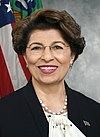
Jovita Carranza | June 19, 2017 – January 14, 2020
(2 years, 209 days) | Donald Trump |
|---|
| 972 days vacant |
| 45 | 
Marilynn Malerba | September 12, 2022 – present
(1 year, 212 days) | Joe Biden |
|---|












































